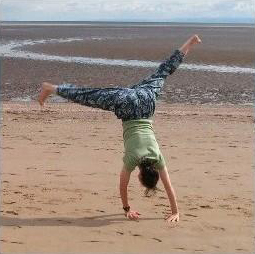
Alexander Technique
with Tim Soar
+44 (0)1792 296278
Research into the Alexander Technique
This page lists some of the research that has been undertaken into the effects of the Alexander Technique over about the last twenty years. Where possible links to the complete papers are given.
Alexander Technique in the setting of an NHS pain clinic
The aim of this exploratory service evaluation was to explore the role, acceptability and impact of an Alexander Technique teaching service at a hospital outpatient NHS Pain Clinic, including service users’ experiences of the service and the perceived benefits to the NHS. The findings suggest that the AT teaching service is feasible, acceptable, and beneficial. The greatest changes were found in how service users managed their pain, for example more than half stopped or reduced their medication, and the impact that the pain had on their daily life.
McClean S and Wye L (2012). “Taking charge, choosing a new direction: A service evaluation of Alexander Technique lessons for pain clinic patients” ⁃ University of the West of England, Bristol
http://eprints.uwe.ac.uk/16903/
Alexander Technique and back pain
This study set out to compare the effectiveness of lessons in the Alexander Technique, massage therapy, and advice from a doctor to take exercise, along with nurse delivered behavioural counselling for patients with chronic or recurrent back pain. The study found that one to one lessons in the Alexander Technique have long term benefits for patients with chronic back pain.
Little P et al (2008). “Randomised controlled trial of Alexander Technique lessons, exercise, and massage (ATEAM) for chronic and recurrent back pain” ⁃ British Medical Journal, 337, a884
http://www.bmj.com/content/337/bmj.a884
The Alexander Technique in managing Parkinson’s disease
This research was a randomised controlled trial with three groups, one receiving lessons in the Alexander Technique, another receiving massage and one with no additional intervention. Measures were taken pre and post-intervention, and at follow-up, six months later. The study concluded that there is evidence that lessons in the Alexander Technique are likely to lead to sustained benefit for people with Parkinson’s disease.
Stallibrass C, Sissons P, Chalmers C (2002). “Randomized controlled trial of the Alexander Technique for idiopathic Parkinson’s disease” ⁃ Clinical Rehabilitation, 16 (7) 695-708
http://journals.sagepub.com/doi/abs/10.1191/0269215502cr544oa
Alexander Technique and postural coordination
The relationship between abnormal postural coordination and back pain is unclear. The Alexander Technique aims to improve postural coordination by using conscious processes to alter automatic postural coordination and ongoing muscular activity, and it has been reported to reduce low back pain. This case report describes the use of the Alexander Technique with a client with low back pain and the observed changes in automatic postural responses and back pain.
Cacciatore TW, Horak FB, Henry SM (2005). “Improvement in automatic postural coordination following Alexander Technique lessons” ⁃ Physical Therapy, 85 565-578
https://www.ncbi.nlm.nih.gov/pmc/articles/PMC1351283/
Alexander Technique and range of movement for the elderly
Functional reach improvement in normal older women after Alexander Technique instruction
Author: Ronald J Dennis
Journal: Journal of Gerontology
Dennis RJ (1999). “Functional reach improvement in normal older women after Alexander Technique instruction” ⁃ Journal of Gerontology, 54A, M8-M11.
Alexander Technique and breathing function
A subjective sense of enhanced ease of breathing has been described after instruction in the Alexander Technique. The researchers investigated the effects of Alexander Technique instruction on respiratory function in healthy adult volunteers. Healthy control subjects, matched for age, gender, height, and weight, without instruction, were tested over a similar interval. The Alexander group showed significant measurable improvements. The control group showed no significant changes. It was concluded that the Alexander Technique may enhance respiratory muscular function in normal adult subjects.
Ausin JHM and Ausubel P (1992). “Enhanced respiratory muscular function in normal adults after lessons in proprioceptive musculoskeletal education without exercises” ⁃ Chest 102 486-490
https://www.ncbi.nlm.nih.gov/pubmed/1643938